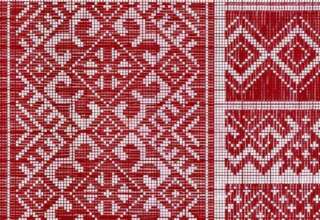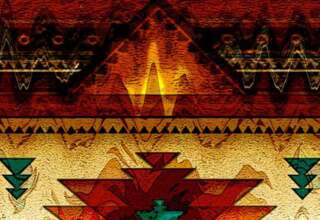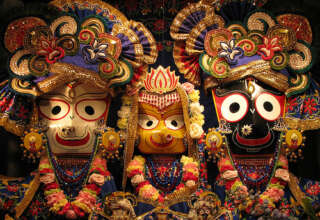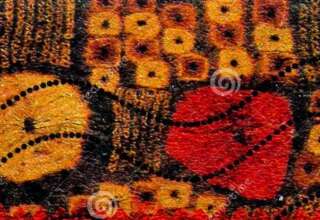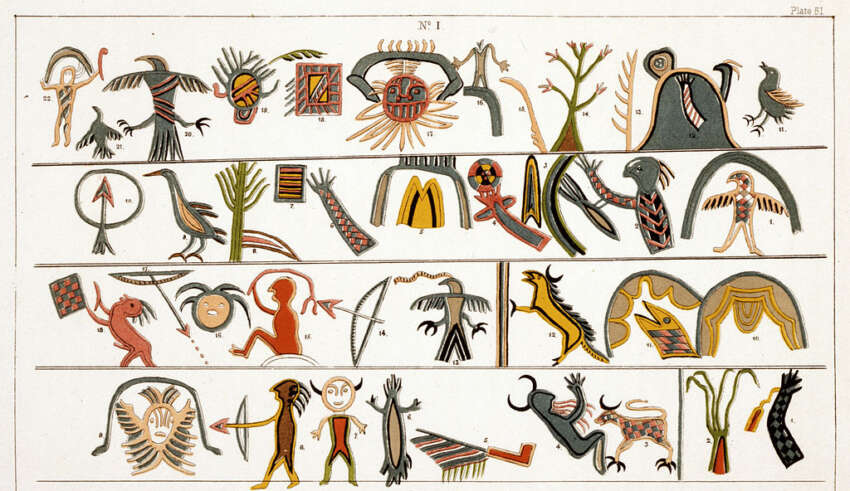
The Ojibwe bury their dead in burial mounds. Many erect a jiibegamig or a “spirit-house” over each mound. An historical burial mound would typically have a wooden marker, inscribed with the deceased’s doodem (clan sign). Because of the distinct features of these burials, Ojibwe graves have been often looted by grave robbers. In the United States, many Ojibwe communities safe guard their burial mounds through the enforcement of the 1990 Native American Graves Protection and Repatriation Act.
Cuisine
There is renewed interest in nutritious eating among the Ojibwe, who have been expanding community gardens in food deserts, and have started a mobile kitchen to teach their communities about nutritious food preparation. The traditional Native American diet was seasonally dependent on hunting, fishing and the foraging and farming of produce and grains. The modern diet has substituted some other types of food like frybread and “Indian tacos” in place of these traditionally prepared meals. The Native Americans loss of connection to their culture is part of the “quest to reconnect to their food traditions” sparking an interest in traditional ingredients like wild rice, that is the official state grain of Minnesota and Michigan, and was part of the pre-colonial diet of the Ojibwe. Other staple foods of the Ojibwe were fish, maple sugar, venison and corn. They grew beans, squash, corn and potatoes and foraged for blueberries, blackberries, choke cherries, raspberries, gooseberries and huckleberries. During the summer game animals like deer, beaver, moose, goose, duck, rabbits and bear were hunted. One traditional method of making granulated sugar known among the Anishinabe was to boil maple syrup until reduced and pour into a trough, where the rapidly cooling syrup was quickly processed into maple sugar using wooden paddles.
Kinship and clan system
Traditionally, the Ojibwe had a patrilineal system, in which children were considered born to the father’s clan. For this reason, children with French or English fathers were considered outside the clan and Ojibwe society unless adopted by an Ojibwe male. They were sometimes referred to as “white” because of their fathers, regardless if their mothers were Ojibwe, as they had no official place in the Ojibwe society. The people would shelter the woman and her children, but they did not have the same place in the culture as children born to Ojibwe fathers.
Ojibwe understanding of kinship is complex and includes the immediate family as well as extended family. Great-grandparents and older generations, as well as great-grandchildren and younger generations, are collectively called aanikoobijigan. This system of kinship reflects the Anishinaabe philosophy of interconnectedness and balance among all living generations, as well as of all generations of the past and of the future.
The Ojibwe people were divided into a number of doodemag (clans; singular: doodem) named primarily for animals and birds totems (pronounced doodem). The word in the Ojibwe language means “my fellow clansman.” The five original totems were Wawaazisii (Bullhead), Baswenaazhi/”Ajiijaak” (“Echo-maker”, i.e., Crane), Aan’aawenh (Pintail Duck), Nooke (“Tender”, i.e., Bear) and Moozwaanowe (“Little” Moose-tail). Each clan had certain responsibilities among the people. People had to marry a spouse from a different clan.
The Ojibwe have spiritual beliefs that have been passed down by oral tradition under the Midewiwin teachings. These include a creation story and a recounting of the origins of ceremonies and rituals. Spiritual beliefs and rituals were very important to the Ojibwe because spirits guided them through life. Birch bark scrolls and petroforms were used to pass along knowledge and information, as well as for ceremonies. Pictographs were also used for ceremonies. The sweatlodge is still used during important ceremonies about the four directions, when oral history is recounted. Teaching lodges are common today to teach the next generations about the language and ancient ways of the past. The traditional ways, ideas, and teachings are preserved and practiced in such living ceremonies.

